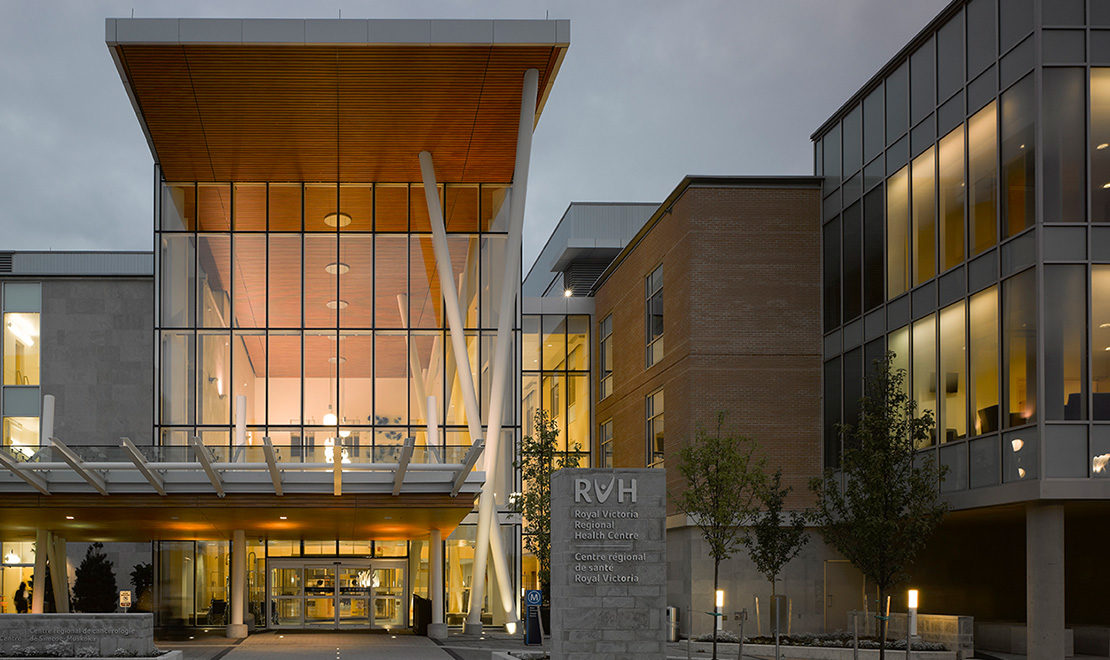
Whether planning a small departmental renovation, major redevelopment or infrastructure renewal, there are a number of important questions to ask at the outset. Having clear answers will have a positive impact on the project outcome.
In particular, project phasing can be greatly informed by asking the right questions about existing and required mechanical, electrical and plumbing services in order to arrive at a successful design solution that supports the project objectives, continued operation of the healthcare facility and safety of its patients.
So, what makes a renovation project a success?
Some key markers are meeting the schedule, staying on budget, minimally disrupting operations and having no safety issues.
Since each facility and project is unique, however, there may be additional, more specific considerations that arise.
Scoping it out COPING IT OUT
One of the most important questions is, What is the project scope? At a higher level, What problem/need will the project solve?
It may be an identified need for redevelopment of a particular area or a key piece of equipment has been failing regularly and funding is now available to address it.
Be aware that the scope may grow beyond the initial assessment based on the requirements of current codes and standards, and existing equipment capacities, among other factors. It is essential to fully understand these impacts and determine how to deal with them.
Conditions specific to the site may dictate changes to the planned scope. For example, there may be a need to run new services into the renovation area from a distribution shaft; replace existing services and equipment to accommodate a renovation, unless alternative approaches are feasible (such as rearranging or reworking equipment to facilitate the increase in load); or phase renovations in critical areas, such as the emergency department, so they can remain operational.
Realize, too, the quality of project work is constrained by three factors: budget, deadlines and scope. A trade-off between constraints is possible but changes in one will usually mean adjustments in the other two to compensate, otherwise the quality of work will suffer.
FACING THE UNKNOWN
It’s imperative to identify and mitigate risks in advance as much as possible. A good question to ask is whether there are plans and budgets for the unexpected, such as discovering ‘serviceable’ equipment is actually on its last legs or the capacity of a generator won’t permit additional load.
One form of technology that can help mitigate the risk of the unknown is 3-D scanning of systems infrastructure, which can greatly improve the reliability of ‘as-built’ information. Scanning is performed within a space to collect ‘as-built’ data and the resulting point cloud is reconstructed into a 3-D model. The model can accurately capture the scanned space and size of services and objects within. This approach works particularly well for plant spaces where services are exposed.
Another way to mitigate unknown risk is by pre-demolition of a space prior to finalizing the design. After demolition of walls and ceilings, the design team can physically view existing services, identify conditions that may not be observable prior to demolition and update documents accordingly. When this is possible, the schedule cost of approximately three to four weeks is often well worth it to alleviate the impact of the unexpected. Other ways to confirm the current condition and capacity of services include review of maintenance records, pipe thickness tests, drain scoping, air and water audits, and metering existing services. Unknowns are always a risk to the budget, schedule and project scope. No matter how diligent the preparations, carrying an allowance as part of the project budget is recommended.
ACCORDING TO SCHEDULE
Questions around schedule are also critical: How quickly does the project need to be designed, constructed and in operation? Is there a fixed deadline (for example, driven by financing mechanisms such as the Health Infrastructure Renewal Fund (HIRF) or Hospital Energy Efficiency Program (HEEP))? How has the schedule been developed? Have representatives been engaged from across the
hospital team? What about the design team? And, depending on how the project is being delivered, is construction team input required?
In building the schedule, it’s important to allow time for considerations such as long delivery equipment items, after-hours work, proper infection prevention and control, and construction phasing. If phasing includes multiple phased occupancies of various areas, time should also be allotted for testing, adjusting, balancing and approvals from authorities having jurisdiction at the conclusion of each stage.
Other scheduling-related questions include: Are plans in place to meet required procurement timelines and processes? Are requests for qualifications and/or proposals or tenders being released through a procurement department? Is the facility posting for competitive bids? If so, does the schedule account for the required bidder response times?
Engaging a design team experienced in healthcare renovation will greatly assist in arriving at reasonable and reliable answers to these questions. The team will also need to understand future plans for the facility. For example, if replacing boilers and the five to 10-year plan includes building an addition, consider whether reasonable allowances can be made in the boiler project to facilitate future expansion. Sometimes spending a few extra dollars now can save on future capital and operating costs.
A MATTER OF PRINCIPLES
Answers to the preceding questions will inform the establishment of the project’s key principles; in other words, the most important factors driving the project. When faced with a difficult decision during the project, these principles will serve as a guide for making decisions. The principles may be driven by budget, schedule, patient experience or a combination of these, plus other factors. Whatever is identified as key principles, share them with the team to assist in setting expectations and defining the scope.
When key principles are established, the sum of the parts may not lead to the outcome originally envisioned. For example, getting things done quickly does not always lend itself to the lowest cost; off-hours/overtime work may be required to meet a compressed schedule. A well-worn axiom sums up this challenge: All successful projects require sufficient time, money and quality. If one is missing, there better be lots of the other two.
PHASING IMPACT
Construction phasing — the general sequence in which the renovation work needs to be performed in order to meet project requirements — is a culmination of addressing all the foregoing issues. Phasing is developed by considering factors such as schedule, departmental operations, hospital operations, infection prevention and control, and budget.
The earlier construction phasing is established, the better. For a departmental renovation, for example, the ideal situation is to shut down the entire area; however, this is often not possible due to operational constraints, so phasing becomes critical.
When establishing phasing, consider how different phases will affect existing mechanical, electrical, plumbing and information technology services. These services often do not respect a renovation project’s physical boundaries. For instance, ductwork supplying one area may continue through to a completely unrelated area but the renovation may impact both. If the team includes multiple design disciplines and professionals, encourage the architect to engage the engineers early and often in the phasing planning to help mitigate some of these risks.
In the early stages of multi-phase projects, execute enabling works for later phases. For example, leave valved/capped connections for extension of medical gases; rough-in junction boxes/empty conduit; allow for proper raceways; and consider placement of any new equipment to permit easy access to expand in a future phase. These simple steps can help ease some of the challenges of building a project over multiple phases.
Minimizing disruption to operations is typically one of the most important factors in a healthcare renovation project. Some schedule-friendly approaches include seasonal replacement of infrastructure (for chiller replacement, schedule construction in non-cooling months; conversely, schedule boiler replacement in summer) and the use of pre-fabricated equipment to assist with overall schedule and phasing/turnover.
FUTURE OUTLOOK
If the initial project scope doesn’t include infrastructure upgrades, it’s important to assess the equipment serving the renovation area and clearly understand its life expectancy and operating costs. While the budget may not allow for it, investigate if spending a little more now (from the capital budget) can reduce future operating costs.
And while looking into the future and thinking about operating dollars, consider the facility’s master plan.
Can this current renovation reasonably accommodate parts of future planned renovations?
Those accommodations could include purchasing additional capacity for particular equipment, leaving space for future equipment in a location conducive to expansion or choosing modular equipment that can be readily expanded.
CODES OF PRACTICE
It’s essential to understand the impact of current codes and standards on the project. The design team can help sort through which activities and replacements should be undertaken versus those that must be done. Understanding how codes and standards relate to the project is critical as they can potentially have a major impact on the project scope and, accordingly, the budget and schedule as well.
GROUNDWORK FOR SUCCESS
For the best chances of delivering a successful project, it is important to ask the right questions. In particular, clarity around the project’s scope and problems it addresses is vital. Determine phasing and related impacts early. As much as possible, identify and mitigate risks in advance. Finally, engaging a design team with verified healthcare renovation experience is a valuable asset in achieving these goals.
Published in the Canadian Healthcare Facilities
Summer 2018

Kim Spencer, P.Eng.
kim.spencer@hhangus.com

Jeff Vernon, P.Eng.
jeff.vernon@hhangus.com
